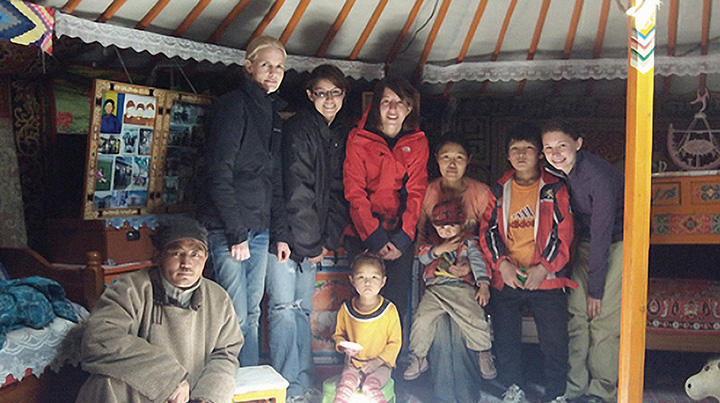Neglected tropical diseases affect the world’s poorest populations

Image: College of Veterinary Medicine & Biomedical Sciences
A Texas A&M University researcher is working to better describe the socioeconomic effects of two parasitic diseases: echinococcosis and neurocysticercosis. The World Health Organization recognizes each as a “neglected tropical disease,” or an “NTD,” one of 17 distinct diseases that thrive among the world’s poorest populations.
Christine M. Budke, an associate professor at the Texas A&M College of Veterinary Medicine & Biomedical Sciences, aims to give researchers and policymakers a better feel for the true impact of these diseases in different parts of the world. This information is vital to promote a better allocation of resources.
“You can have many cases of a disease that are fairly mild,” Budke said. “On the other hand, you can have a relatively small number of cases, such as has occurred with the Ebola outbreak, with a high mortality rate. Our goal is to find ways to better quantify the true impact of these diseases on a society.”
One method is to create a common metric for comparing diseases, such as The DALY, or Disability Adjusted Life Year, which measures morbidity, mortality, and duration, as well as the severity of clinical symptoms of a disease. This enables researchers to compare very different diseases—such as the common cold and an Ebola infection.
One DALY can be thought of as one lost year of “healthy” life. The sum of these DALYs across the population, or the burden of disease, can measure the gap between the current health status and an ideal health situation, where the entire population lives to an advanced age, free of disease and disability.
“If you are able to incorporate mortality and the severity of the disease into that metric, you can actually compare the impact of ebola and the common cold or a parasitic disease with a viral disease because you are using a common language and a common tool,” Budke said.
Budke works with a number of global initiatives focused on estimating the effect of these parasites on societies in which they are found. Other groups within these initiatives are working on other parasitic agents, as well as toxins and chemicals, bacteria, and viruses. Noting which diseases are impacting a particular country’s population can aid policymakers in determining priorities.
In the last 10 years, Budke noted, there has been an effort to put NTDs “on the map,” so to speak. “I think we are at least starting to go in the right direction to finally address some of these conditions,” she said. Part of the challenge, however, is that when something “big, new or exciting,” such as avian flu or Ebola, hits the news, it can be dramatic and get an abundance of attention. “A lot of these NTDs have been around for a very long time. They tend to be chronic. They just don’t grab the same attention as some higher-profile diseases; therefore, they tend to be forgotten.”

